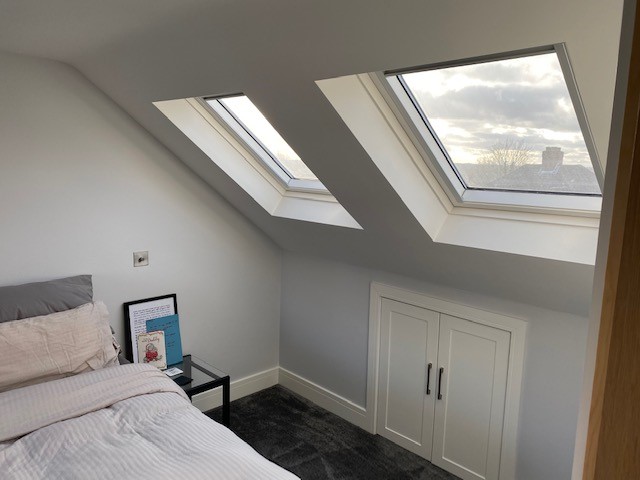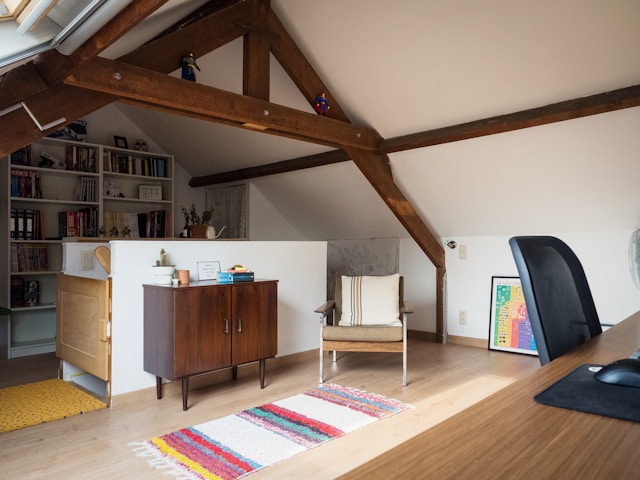Loft conversions are increasingly becoming a popular choice for homeowners looking to enhance their living space without the need to move. Whether it’s to accommodate a growing family, create a home office, or simply to add a touch of luxury, converting an unused loft into a functional room can offer numerous benefits. One of the most significant advantages is the potential increase in property value. But just how much can you expect to boost your home’s worth with a loft conversion? Let’s explore this in detail.
What is a Loft Conversion?
Before diving into the impact on property value, it’s important to understand what a loft conversion entails. Essentially, a loft conversion involves transforming the unused attic space in your home into a habitable room. This can be anything from a simple bedroom or office to a more elaborate living area with en-suite bathrooms or even a mini-gym. The complexity and style of the conversion will significantly influence both the cost and the potential value it can add.
Factors Influencing Property Value Increase
Several factors will determine how much a loft conversion can increase your home’s value. Let’s break these down:
1. Type of Loft Conversion
There are several types of loft conversions, each with its own impact on property value:
- Velux Conversion: This is the most straightforward and often the least expensive type, where windows are installed into the existing roof. While it adds valuable space and light, the increase in property value might be lower compared to more extensive conversions.
- Dormer Conversion: This involves extending the roof to create more headroom and floor space. Dormer conversions are more impactful and can significantly boost property value, especially in areas where additional bedrooms or living spaces are in high demand.
- Mansard Conversion: This type involves altering the roof’s pitch and is usually a more complex and costly option. However, it can provide substantial additional living space and, as a result, a considerable increase in property value.
- Hip-to-Gable Conversion: Suitable for homes with a hipped roof, this conversion extends the side of the roof, providing more internal space. It’s particularly beneficial in terms of value if the property is located in an area with high demand for additional living space.
2. Location of the Property
The location of your home plays a crucial role in determining how much value a loft conversion can add. In highly sought-after areas where space is at a premium, a well-executed loft conversion can provide a substantial increase in property value. Conversely, in areas where property prices are lower, the impact on value might be less pronounced.
3. Quality of the Conversion
The quality of the loft conversion will significantly influence its effect on property value. High-quality finishes, professional craftsmanship, and well-designed layouts are likely to yield a better return on investment. Buyers are more inclined to pay a premium for a loft conversion that seamlessly integrates with the rest of the home and offers a stylish, functional space.
4. Current Property Value and Market Conditions
The current market conditions and the existing value of your property will also affect the potential increase. In a strong housing market, the addition of a loft conversion can lead to a higher percentage increase in property value. On the other hand, in a sluggish market, the increase might be less significant.
Estimating the Increase in Property Value
While there’s no one-size-fits-all answer, various studies and property experts provide some general guidelines. On average, a well-executed loft conversion can add between 10% to 20% to the value of your property. For example, if your home is worth £300,000, a loft conversion could potentially increase its value by £30,000 to £60,000.
Case Studies and Real-Life Examples
To give you a clearer picture, let’s look at a couple of real-life examples:
- Example 1: A Dormer Conversion in London: In a London suburb, a homeowner invested £40,000 in a dormer loft conversion. The conversion added a spacious master bedroom with an en-suite bathroom. The property’s value increased by approximately £80,000, showcasing a return on investment of 200%.
- Example 2: Velux Conversion in Manchester: In Manchester, a £20,000 Velux loft conversion provided a cozy home office and additional storage space. While it didn’t create as much additional floor space, the property value still increased by around £25,000, reflecting a 125% return on investment.

Additional Considerations
1. Planning Permissions and Regulations
Ensure you have the necessary planning permissions and comply with building regulations before starting your loft conversion. Proper documentation and adherence to regulations are essential for ensuring that your conversion is legal and will add value to your property.
2. Potential for Future Growth
Consider the long-term impact of your loft conversion. In rapidly developing areas or neighborhoods with increasing property values, the return on investment might grow over time. Therefore, even if the immediate increase isn’t substantial, the conversion could be a wise investment for future gains. If you are seeking a source and information about loft conversion and property value, feel free to visit https://loftconversion.london/ to learn more.
3. Impact on Living Space
Think about how the new space will fit into the overall living environment of your home. A well-planned loft conversion can enhance the functionality of your home, making it more appealing to potential buyers and increasing its market value.
Conclusion
In summary, a loft conversion can significantly increase your property’s value, with potential gains ranging from 10% to 20% of your home’s current worth. The type of conversion, location, quality, and market conditions all play a role in determining the exact impact. By carefully considering these factors and ensuring a high-quality conversion, you can maximize the value added to your property, making it a valuable investment in the long run.


